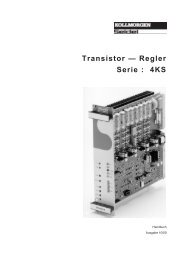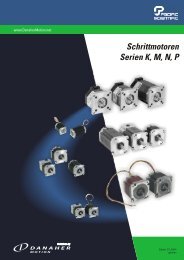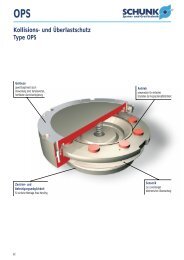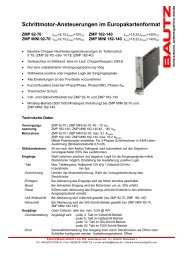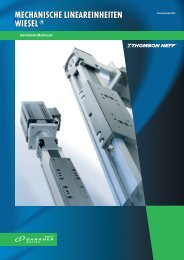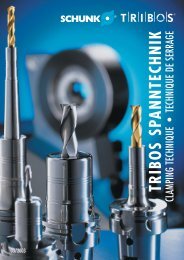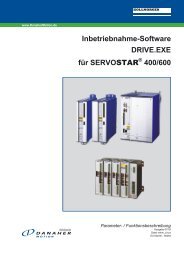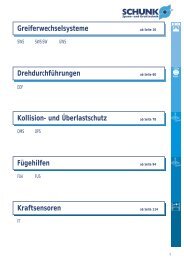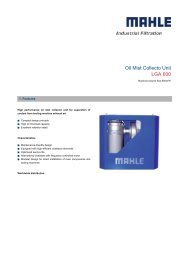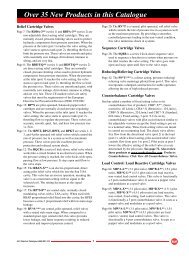Synchronous servomotors DBL/DBK - BIBUS SK, sro
Synchronous servomotors DBL/DBK - BIBUS SK, sro
Synchronous servomotors DBL/DBK - BIBUS SK, sro
You also want an ePaper? Increase the reach of your titles
YUMPU automatically turns print PDFs into web optimized ePapers that Google loves.
Kollmorgen 01/2004 Installation / Setup<br />
II Installation / Setup<br />
II.1 Important notes<br />
� Check that the servoamplifier and motor match each other. Compare the rated voltage and<br />
rated current of the unit. Carry out the wiring according to the wiring diagram in the Installation<br />
and Setup Instructions for the servoamplifier. The connections to the motor are shown<br />
on pages 17f. Notes on the connection methods can be found on page 16.<br />
� Ensure that there is proper earthing of the servoamplifier and the motor.<br />
� Route the power and control cables as separately as possible from one another (separation<br />
> 20 cm). This will improve the immunity of the system to electromagnetic interference.<br />
If a motor power cable is used which includes integral brake control leads, then these brake<br />
control leads must be shielded. The shielding must be connected at both ends (see under<br />
Installation Instructions for the servoamplifier).<br />
� Install all cables carrying a heavy current with an adequate cross-section, as per EN 60204.<br />
The recommended cross-section can be found in the Technical data.<br />
Caution!<br />
If a servoamplifier of the series SERVOSTAR 601 ..620 is used and the motor<br />
cable exceeds 25m, a boxed choke (type 3YL-20, manufactured by Kollmorgen)<br />
and motor leads with the following diameters must be used:<br />
Servo amplifier Choke box Max. diameter of the motor lead<br />
SERVOSTAR 601...606 3YL-20 4 x 1mm²<br />
SERVOSTAR 610 3YL-20 4 x 1,5mm²<br />
SERVOSTAR 620 3YL-20 4 x 2,5 mm²<br />
� Connect up all shielding via a wide surface-area contact (low impedance) and metallized<br />
connector housings or EMC-cable glands.<br />
� Check the compliance to the permitted radial and axial forces FR and FA.<br />
When you use a toothed belt drive, the minimal permitted diameter of the pinion e.g. follows<br />
from the equation: d<br />
M<br />
min � 0 �2.<br />
F R<br />
� Ensure that there is adequate heat transfer in the surroundings and the motor flange, so that<br />
the maximum permissible flange temperature is not exceeded in S1 operation.<br />
Caution!<br />
Never undo the electrical connections to the motor while it is energised. A dangerous<br />
voltage, resulting from residual charge, can be still present on the capacitors<br />
up to 5 minutes after switch-off of the mains supply.<br />
Measure the DC-link voltage and wait until it has fallen below 40V.<br />
Even when the motor is not rotating, control and power leads may be live.<br />
Servomotors <strong>DBL</strong>/<strong>DBK</strong> 13




